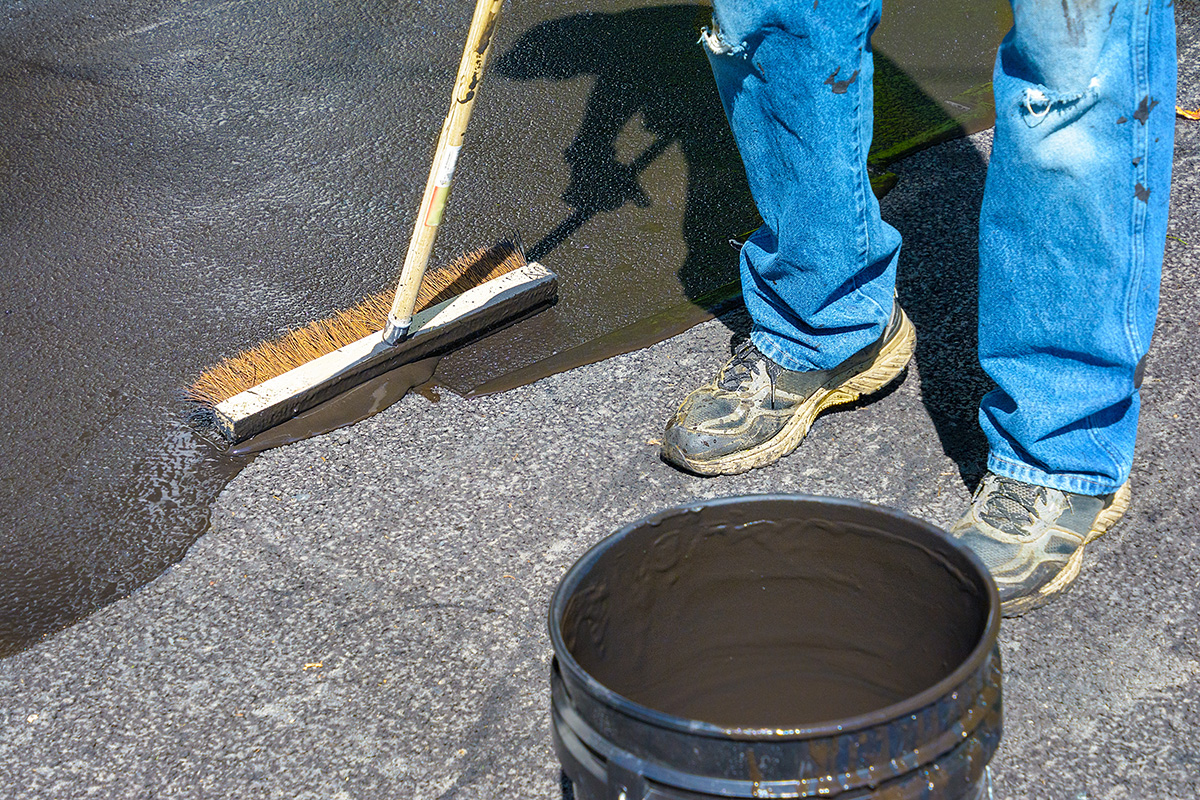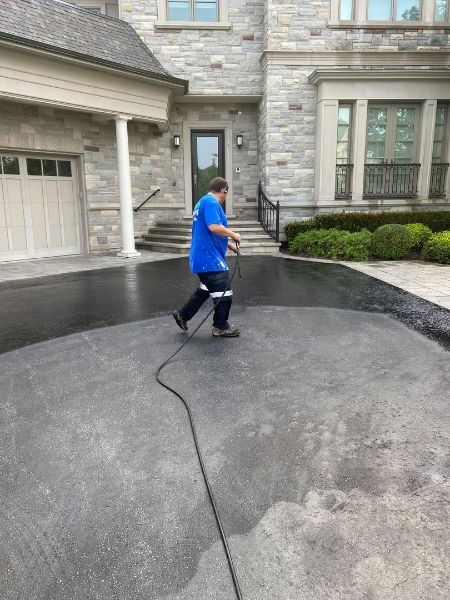Make Best Use Of Financial Investment Returns: Angled Car Park Excellence with Asphalt Sealing
Make Best Use Of Financial Investment Returns: Angled Car Park Excellence with Asphalt Sealing
Blog Article
Hot Mix Asphalt: A Lasting Remedy for Pavement
Hot Mix Asphalt (HMA) has emerged as a leading sustainable selection for sidewalk remedies, using a myriad of innovative modern technologies and environmental advantages. As the demand for green building and construction techniques grows, discovering the subtleties of HMA's sustainability can offer important insights into the future of sidewalk solutions.
Ecological Advantages of Warm Mix Asphalt

Additionally, Warm Mix Asphalt assists to reduce urban heat island effects. Its dark color takes in sunlight, reducing the quantity of warmth mirrored back into the atmosphere contrasted to lighter-colored sidewalks. This can decrease ambient temperatures in urban locations, lowering the demand for air conditioning and inevitably lowering energy usage.
On top of that, Warm Mix Asphalt adds to boosted stormwater administration. Its porous nature permits water to infiltrate the sidewalk and recharge groundwater materials, decreasing runoff and the threat of flooding. These environmental advantages make Warm Mix Asphalt a sustainable option for leading roadways and freeways.
Energy Efficiency in HMA Production
Is energy effectiveness a vital aspect in the production of Hot Mix Asphalt (HMA)? Absolutely. Power plays a considerable role in the production of HMA, influencing both price and ecological sustainability. One key aspect of energy performance in HMA production is using cozy mix asphalt (WMA) technologies (commercial parking lot paving). WMA enables the mixing and placement of asphalt at reduced temperatures compared to traditional warm mix asphalt, causing minimized energy intake throughout production. This process not only decreases fuel use yet also lowers greenhouse gas discharges, making it a more eco-friendly alternative.
In addition, innovations in plant modern technologies have actually led to more energy-efficient HMA production procedures. By optimizing energy use in HMA manufacturing, the sector can lower its carbon footprint while preserving high-quality sidewalk products.
Recyclability of Warm Mix Asphalt
The recyclability of Warm Mix Asphalt (HMA) is a pivotal element of its sustainability and long-lasting ecological impact. HMA is one of the most recycled materials in the United States, with over 100 million lots of redeemed asphalt sidewalk (RAP) being reused yearly in new pavement building and construction. Recycling HMA offers numerous environmental benefits, such as lowering the requirement for virgin materials, decreasing energy usage throughout production, and visit this web-site lowering the amount of waste sent out to garbage dumps.
The process of reusing HMA involves grating the existing sidewalk, squashing it into smaller sized items, and blending it with brand-new aggregate and asphalt binder to produce a recycled mix. In general, the recyclability of HMA plays a significant duty in promoting lasting techniques within the pavement industry.

Long-Term Efficiency of HMA
Asphalt sidewalks show longevity and strength over an extensive duration, reflecting the long-lasting performance of Hot Mix Asphalt (HMA) The long life of HMA can be associated to its ability to hold up against hefty web traffic tons, extreme climate condition, and the impacts of aging. Research studies have shown that well-designed and appropriately created HMA sidewalks can last for 20 years or more with normal upkeep. The trick to optimizing the long-term efficiency of HMA depends on utilizing top notch materials, following ideal practices in building, and carrying out efficient maintenance methods. Proper drain, regular inspections, and prompt fixings are necessary for maintaining the structural stability of HMA sidewalks in time. In addition, developments in HMA innovation, such as making use of polymer-modified binders and warm mix asphalt, have actually even more enhanced the longevity and durability of HMA sidewalks. By focusing on quality building and construction and maintenance practices, HMA proceeds to show itself as a lasting and cost-efficient option for long-lasting sidewalk infrastructure.

HMA: Toughness and Sustainability
Showing both resilience and sustainability, Hot Mix Asphalt (HMA) go to the website has actually come to be a foundation in the construction of long-lasting pavement facilities - commercial go parking lot paving. HMA's resilience stems from its capacity to hold up against heavy loads, severe weather condition problems, and high web traffic quantities, making it a dependable option for roads, freeways, and airport terminal paths. The structure of HMA, which typically includes accumulations, binder, and filler, plays a crucial role in enhancing its longevity and resistance to tear and put on
Furthermore, HMA's sustainability lies in its recyclability and energy-efficient production process. The capability to recycle redeemed asphalt pavement (RAP) in new HMA combinations reduces the demand for virgin materials and reduces the ecological influence of pavement construction and maintenance. In addition, the power effectiveness of generating HMA hinges on its lower blending temperature levels contrasted to various other pavement materials, resulting in decreased energy consumption and greenhouse gas exhausts.
Verdict
In conclusion, warm mix asphalt (HMA) offers a lasting remedy for sidewalk with its environmentally pleasant characteristics. HMA's recyclability, power efficiency in production, and long-term sturdiness make it an eco-friendly option for road construction.
HMA is one of the most recycled products in the United States, with over 100 million lots of reclaimed asphalt pavement (RAP) being recycled annually in new pavement building and construction.The process of reusing HMA includes crushing the existing pavement, crushing it right into smaller items, and mixing it with brand-new aggregate and asphalt binder to develop a recycled mix.Asphalt sidewalks demonstrate sturdiness and resilience over a prolonged period, showing the long-lasting performance of Warm Mix Asphalt (HMA) Furthermore, improvements in HMA technology, such as the usage of polymer-modified binders and warm mix asphalt, have actually better improved the longevity and long life of HMA sidewalks. The ability to reuse reclaimed asphalt sidewalk (RAP) in brand-new HMA mixes lowers the demand for virgin materials and decreases the environmental effect of sidewalk construction and maintenance.
Report this page